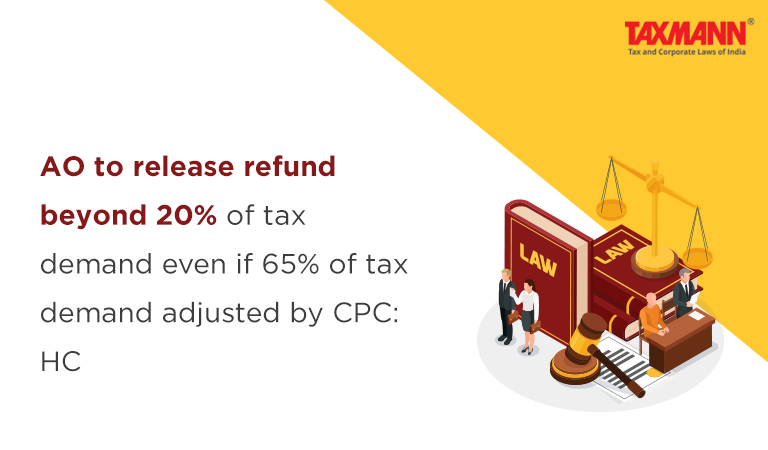AO to release refund beyond 20% of tax demand even if 65% of tax demand adjusted by CPC: HC
- News|Blog|Income Tax|
- 2 Min Read
- By Taxmann
- |
- Last Updated on 15 February, 2023
Case Details: Neo Structo Construction (P.) Ltd. v. ACIT - [2023] 147 taxmann.com 238 (Gujarat)
Judiciary and Counsel Details
-
- Ms Sonia Gokani & Sandeep N. Bhatt, JJ.
- Dhinal A. Shah for the Appellant.
- Kalpana K. Raval & Karan Shanghani for the Respondent.
Facts of the Case
Assessee was company registered in India. It filed return of income declaring total income at Rs. 43,01,51,910/- for the assessment year 2012-2013. The case was selected for scrutiny and an assessment order was passed raising tax demand upon the assessee. Assessee filed an appeal before the CIT(A) against the assessment order.
Centralized Processing Centre (CPC) adjusted the tax demand against the refund payable to the assessee for various years. A total of 65.43% of the total demand raised on the assessee was adjusted against the refund payable.
Assessee filed an application before the AO requesting to release the refund of an amount adjusted beyond 20% of the tax demand. Assessee cited the CBDT memorandum which prescribes the payment of 20% of the disputed amount if the demand is contested before the CIT(Appeals). However, AO rejected the application.
Assessee approach the Gujarat High Court for relief.
High Court Held
The Gujarat High Court held that as per the CBDT’s guidelines, AO is required to grant stay of demand till disposal of the First Appeal where the outstanding demand is disputed before the CIT (Appeals) on payment of 20% of the disputed demand.
The guidelines are issued by the Board for all Assessing Officers, who are to act upon the same quickly and to abide by the same observing its spirit. It is obviously to be applied on an application moved by the assessee in a pending appeal.
In the given case, almost 65% of the demand for the Assessment Year 2012-13 was adjusted with pending refunds. This was way beyond the percentage which has been contemplated under the CBDT’s Memorandum.
The only reason given by the AO for denying and not acceding to the request of the assessee was that the adjustment of the refund against the demand was done by the CPC system. This highhanded approach on the part of AO was neither palatable nor endorsable.
It is a matter of concern that the CBDT’s attempts to establish guidelines and standardize procedures for the benefit of citizens will be ineffective unless officers in the field follow them both literally and in spirit.
Thus, the writ petition was allowed and AO was directed to refund the excess amount adjusted beyond the 20% demand raised for the assessment year 2012-13.
Disclaimer: The content/information published on the website is only for general information of the user and shall not be construed as legal advice. While the Taxmann has exercised reasonable efforts to ensure the veracity of information/content published, Taxmann shall be under no liability in any manner whatsoever for incorrect information, if any.

Taxmann Publications has a dedicated in-house Research & Editorial Team. This team consists of a team of Chartered Accountants, Company Secretaries, and Lawyers. This team works under the guidance and supervision of editor-in-chief Mr Rakesh Bhargava.
The Research and Editorial Team is responsible for developing reliable and accurate content for the readers. The team follows the six-sigma approach to achieve the benchmark of zero error in its publications and research platforms. The team ensures that the following publication guidelines are thoroughly followed while developing the content:
- The statutory material is obtained only from the authorized and reliable sources
- All the latest developments in the judicial and legislative fields are covered
- Prepare the analytical write-ups on current, controversial, and important issues to help the readers to understand the concept and its implications
- Every content published by Taxmann is complete, accurate and lucid
- All evidence-based statements are supported with proper reference to Section, Circular No., Notification No. or citations
- The golden rules of grammar, style and consistency are thoroughly followed
- Font and size that’s easy to read and remain consistent across all imprint and digital publications are applied








 CA | CS | CMA
CA | CS | CMA


